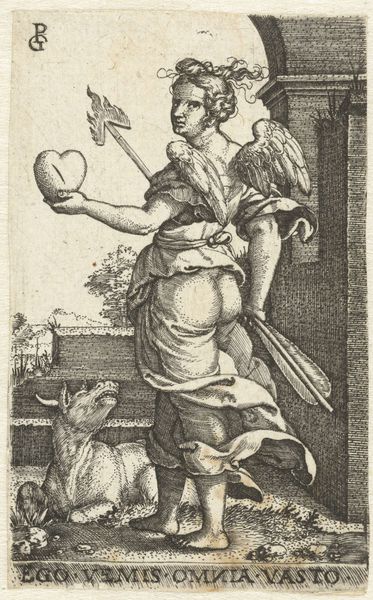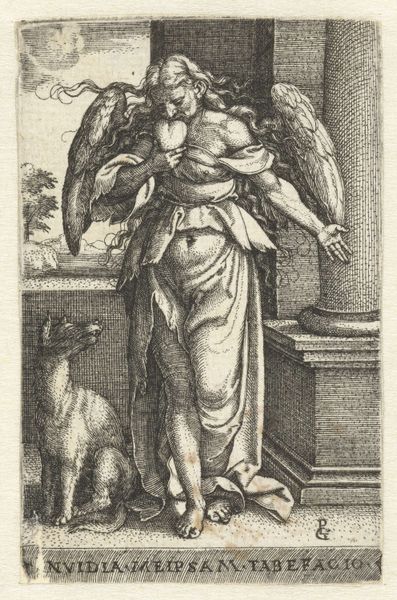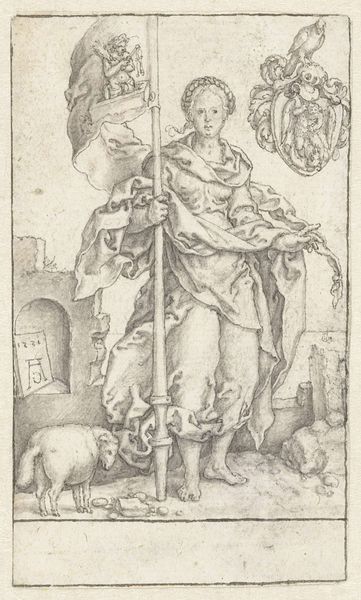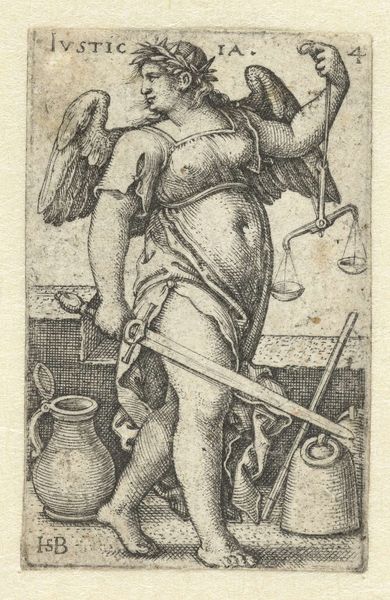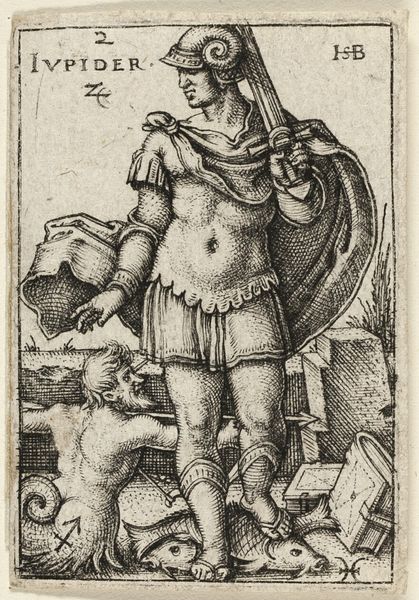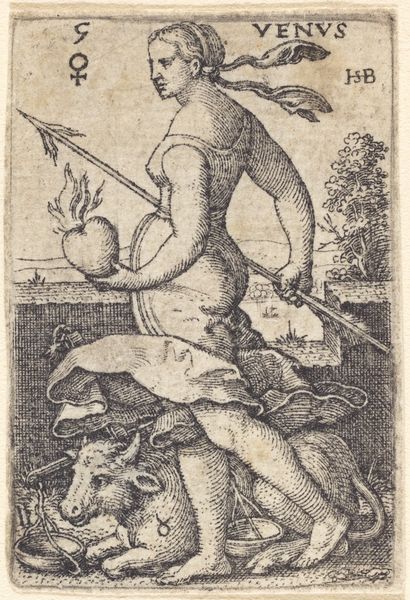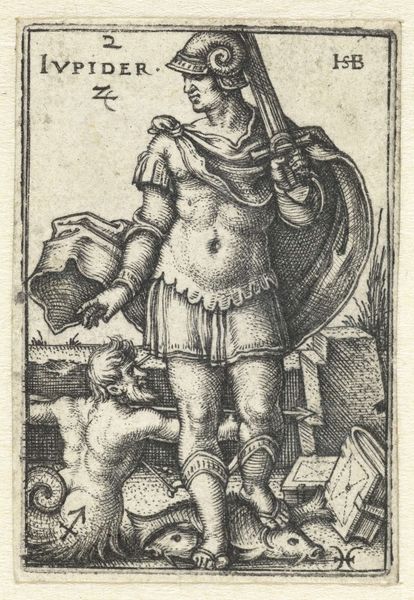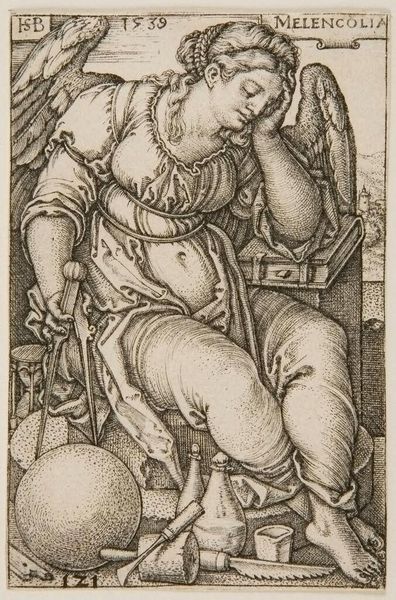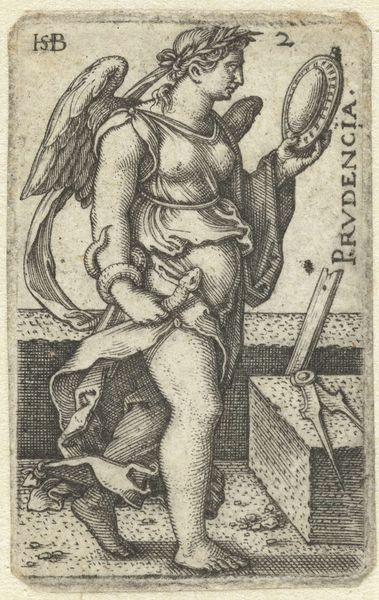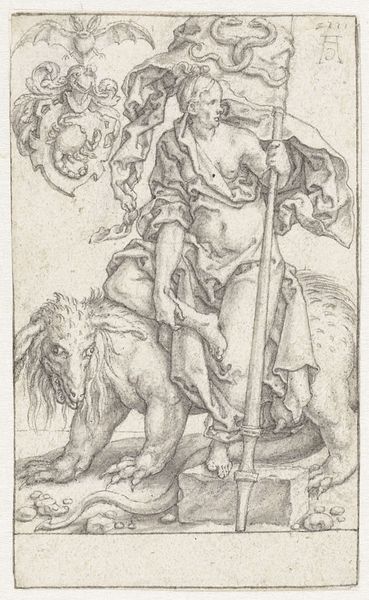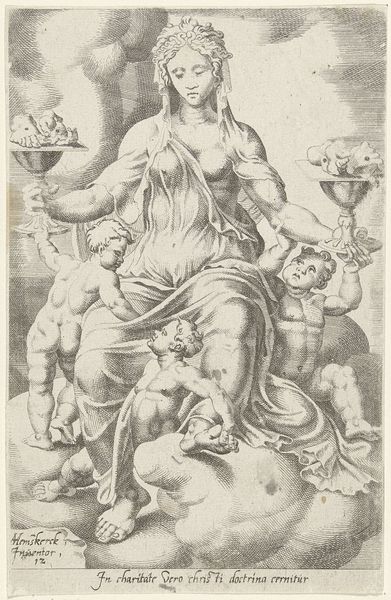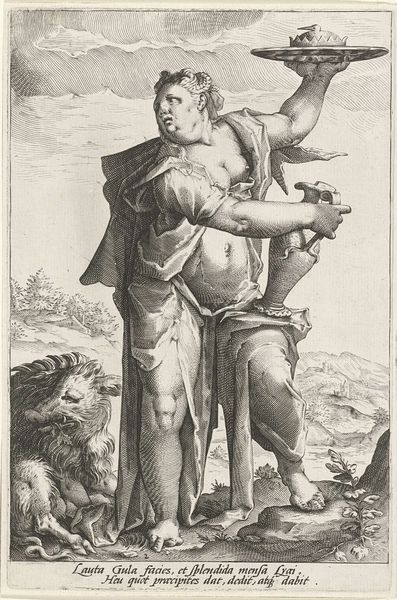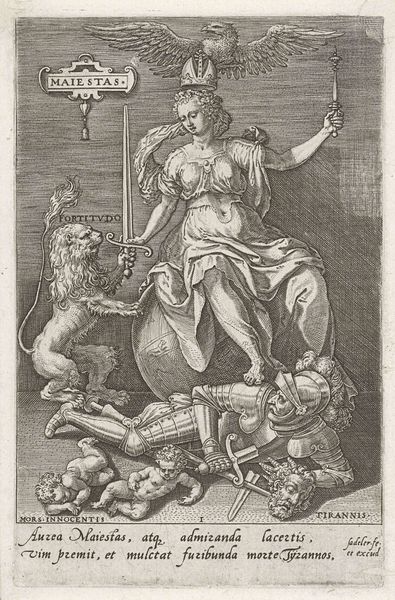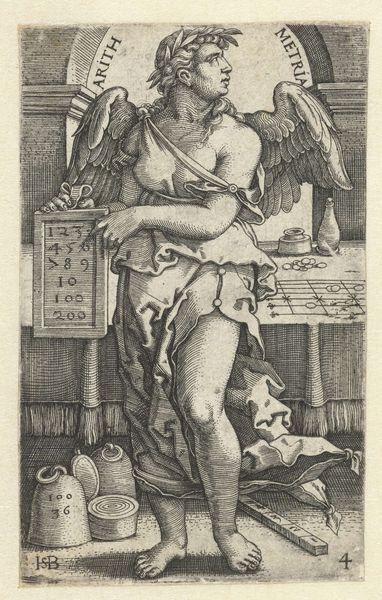
print, engraving
#
allegory
# print
#
figuration
#
history-painting
#
northern-renaissance
#
engraving
Dimensions: height 83 mm, width 52 mm
Copyright: Rijks Museum: Open Domain
This engraving by Georg Pencz, dating back to the 16th century, vividly depicts 'Gula,' or gluttony, one of the seven deadly sins. Observe how Pencz embodies excess through the figure's bulging belly and the overflowing vase she carries, symbols of unrestrained consumption. The wreath of ivy is a telltale sign of Bacchus. And what about the pig? Look at the animal’s voracious appetite, further emphasizing this insatiable desire. Throughout art history, the pig appears frequently as a symbol of gluttony. Consider its earlier appearances in medieval morality plays, where the pig-like demons often tempted humans towards sinful indulgence. Note how this image has morphed over time, retaining its core association with excess, yet shifting to reflect contemporary anxieties about desire and self-control. The figure's wings are a powerful paradox, suggesting a fall from grace. This reflects a timeless struggle, tapping into our collective memory of the dangers inherent in unbridled desire.
Comments
No comments
Be the first to comment and join the conversation on the ultimate creative platform.
